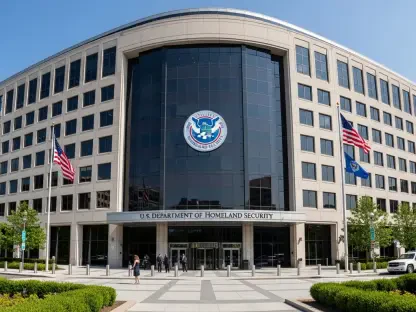In a startling development that has sent ripples through the national security community, the Cybersecurity and Infrastructure Security Agency (CISA), a pivotal federal body tasked with safeguarding the nation’s digital and physical infrastructure, has recently undergone significant layoffs. Announced on a quiet Friday evening, these reductions in force have affected multiple key divisions within the agency, raising urgent questions about the potential impact on the country’s ability to defend against cyber threats. As a cornerstone of civilian cyber defense, CISA’s role in protecting critical systems—from power grids to election infrastructure—has never been more vital. Yet, with political pressures mounting and federal job cuts aligning with broader administrative goals, the timing and scope of these layoffs have sparked intense debate. This situation underscores a growing tension between operational needs and ideological shifts, prompting concern among experts and stakeholders about the future resilience of national cybersecurity frameworks.
Impact on Critical Divisions
The layoffs have struck at the heart of CISA’s operations, with the Infrastructure Security Division bearing a significant brunt of the reductions. This division, responsible for protecting vital national assets such as water treatment facilities and energy grids, has seen staff cuts that could jeopardize its ability to respond to emerging threats. Notably, the Chemical Security subdivision within this group faces potential program eliminations, as outlined in recent Department of Homeland Security (DHS) budget documents. Some employees have even opted for deferred resignation programs, allowing early exits with temporary pay, which further depletes expertise in this critical area. The loss of seasoned professionals in such a specialized field raises alarms about the agency’s capacity to maintain robust safeguards against both physical and digital attacks on infrastructure, especially at a time when adversaries are increasingly targeting these sectors with sophisticated methods designed to disrupt essential services.
Beyond infrastructure, the Stakeholder Engagement Division, which fosters essential national and international partnerships, has also been hit hard by these layoffs. This group plays a crucial role in coordinating with private sector entities and global allies to share threat intelligence and develop unified defense strategies. The reduction in staff here could weaken collaborative efforts, potentially leaving gaps in communication and response mechanisms during cyber crises. While exact figures on affected CISA employees remain undisclosed, court filings reveal that 176 DHS personnel, under whose umbrella CISA operates, have been terminated. The possibility of further cuts looms large, casting a shadow over the agency’s ability to maintain its extensive network of relationships. As cyber threats grow more complex and interconnected, the erosion of these partnerships might hinder timely information sharing, ultimately compromising the nation’s preparedness for large-scale cyber incidents.
Political Context and Controversy
The layoffs at CISA are not occurring in a vacuum but are deeply intertwined with political dynamics that have placed the agency under intense scrutiny. Historically, cybersecurity has enjoyed bipartisan support, positioning CISA as a trusted leader in civilian cyber defense. However, recent administrative shifts have brought criticism over the agency’s past initiatives, particularly efforts to counter misinformation on issues like public health and elections. Some political voices argue that these actions overstepped boundaries, venturing into areas perceived as infringing on free speech through partnerships with social media platforms to flag false content. DHS has framed the current layoffs as a necessary realignment to refocus CISA on its core mission, yet this rationale has not quelled concerns. The intersection of ideological priorities with operational mandates highlights a broader agenda to reshape federal functions, raising questions about whether such changes prioritize efficiency over comprehensive security.
Adding to the complexity, the narrative surrounding these layoffs reflects a divide in perspective. While DHS presents the reductions as a pragmatic step toward clarity in mission objectives, the targeting of pivotal divisions suggests potential risks to national security capabilities. Anonymous sources within the agency, cautious of reprisal, have expressed worry that these cuts strike at areas essential for safeguarding critical infrastructure and coordinating defense strategies. The historical context of CISA’s role in combating disinformation further fuels the debate, positioning the agency at the center of a contentious balance between public safety and individual rights. As political tensions shape the discourse, the layoffs signal a challenging landscape where operational necessities must navigate ideological contention, leaving stakeholders to ponder the long-term implications for cybersecurity resilience in an era of escalating digital threats.
Future Implications for National Defense
Looking ahead, the layoffs at CISA could herald a period of uncertainty for national cybersecurity efforts. The immediate impact, though numerically limited with 176 terminations across DHS, affects core areas that are vital to protecting the nation’s infrastructure and digital ecosystems. The selective trimming of programs, such as those within Chemical Security, suggests a strategic reshaping that might prioritize certain threats over others, potentially at the cost of a holistic defense approach. As adversaries continue to exploit vulnerabilities in critical systems, any reduction in expertise or resources could create exploitable gaps. The challenge now lies in assessing how CISA can adapt to these constraints while maintaining its mandate to shield the country from cyber and physical disruptions, especially as technological advancements by hostile entities outpace defensive measures in many domains.
Moving forward, a critical step will be for policymakers and agency leaders to transparently address the ramifications of these layoffs and outline a clear path to mitigate risks. Strengthening partnerships with private sector entities and international allies could help offset the loss of internal capacity, ensuring that threat intelligence and response mechanisms remain robust. Additionally, investing in training and recruitment to rebuild expertise in affected divisions might offer a long-term solution to restore CISA’s operational strength. The focus should also extend to reassessing budget allocations to prioritize areas most vulnerable to attack. As the nation grapples with an evolving threat landscape, the lessons from this restructuring must inform strategies that balance fiscal responsibility with the imperative of safeguarding critical infrastructure, ensuring that cybersecurity remains a non-negotiable pillar of national defense.









